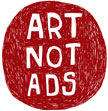Imagine a space in a gallery that invites you to linger comfortably, that engulfs your body first and then, when you discover more and more to explore, mentally and even emotionally. You are entering a world expressed in a language you understand, with trees between you and the horizon, clouds and birds above you. You forget that you dressed a certain way to come to this space, that you are expected to express your decisions or judgments about what you see hear (calling on your knowledge of art history or at the very least memory of the wall labels to sound intelligent and credible and like a worthy member of the club.) Instead of trying to do all that, you simply allow the information surrounding you take you into yourself. All your personal experiences are relevant, valid tools to use as you seek meaning around you. Decipherable writing, paper (a familiar texture), perhaps your favorite color or the favorite color of your best friend, a face that reminds you of someone you know—there is no mystery about why or how this place exists; it’s not at all beyond your comprehension. The person or people (can you tell how many hands contributed to this endeavor? Does it matter?) who made these objects, this world, are not any more special or important than you—we all have stories to tell, we all use our hands to express ourselves and to give gifts to each other, it’s what we share across cultures and generations, and how we understand cultures and generations other than our own. The sense of “I” you are so accustomed to in this society is replaced by a feeling of “we.”
Comfortable and oriented in the landscape situation, you begin to process the next level of information available. You begin to turn the pages of this story, finding history lessons you think you learned in middle school in the bark of that tree, or the same color dirt in that handmade paper as in your mother’s backyard. There is so much to take in on this intimate scale that you can’t help but to make your own associations, to weave your own story into the fabric of this one. That is okay; our stories always become richer, our understanding stronger, when we share, relate, combine, or write them together. And in the end, how different could two people’s stories really be?
Many of the norms and traditions in the discipline of fine arts counteract my intentions as an artist. I desire to make art because of the potential I see in it to foster community and the kind of thoughtfulness/awareness that can lead to real criticism and social change. However, the art world is often less than conducive to this aim.
People enter a gallery space all too prepared for art—inherent to the gallery are several relationships that I wish to change:
1. the hierarchy of the artist’s intention over the meaning an audience can derive from their own experiences and associations,
2. the idea that art is separate from our everyday experience and even safe from it
3. the relationship between a passive observer and the observed object
4. the celebration of the artist as an exceptional individual (and the subsequent implications that art is a thing to be made alone and by a certain heroic person.)
This thesis, in process, content, and exhibition, is my attempt to expose, work against or in spite of these issues, or to eliminate them from my art altogether.





The blockade of the art world is that it becomes "an art world" as opposed to individual masterpieces which, by virtue of them being works of art, become grouped into the category of art.
ReplyDelete"1. the hierarchy of the artist’s intention over the meaning an audience can derive from their own experiences and associations..."
*Interesting and obviously multitudinous regarding first, the "hierarchy of intentions" (Gosh, I love that specific choice of words!)- and effect it has...what it evokes...what qualities /skills/circumstances can be manifested via art? I am Curious which social changes you'd like to make. What are your thoughts on
CAPITALISM?